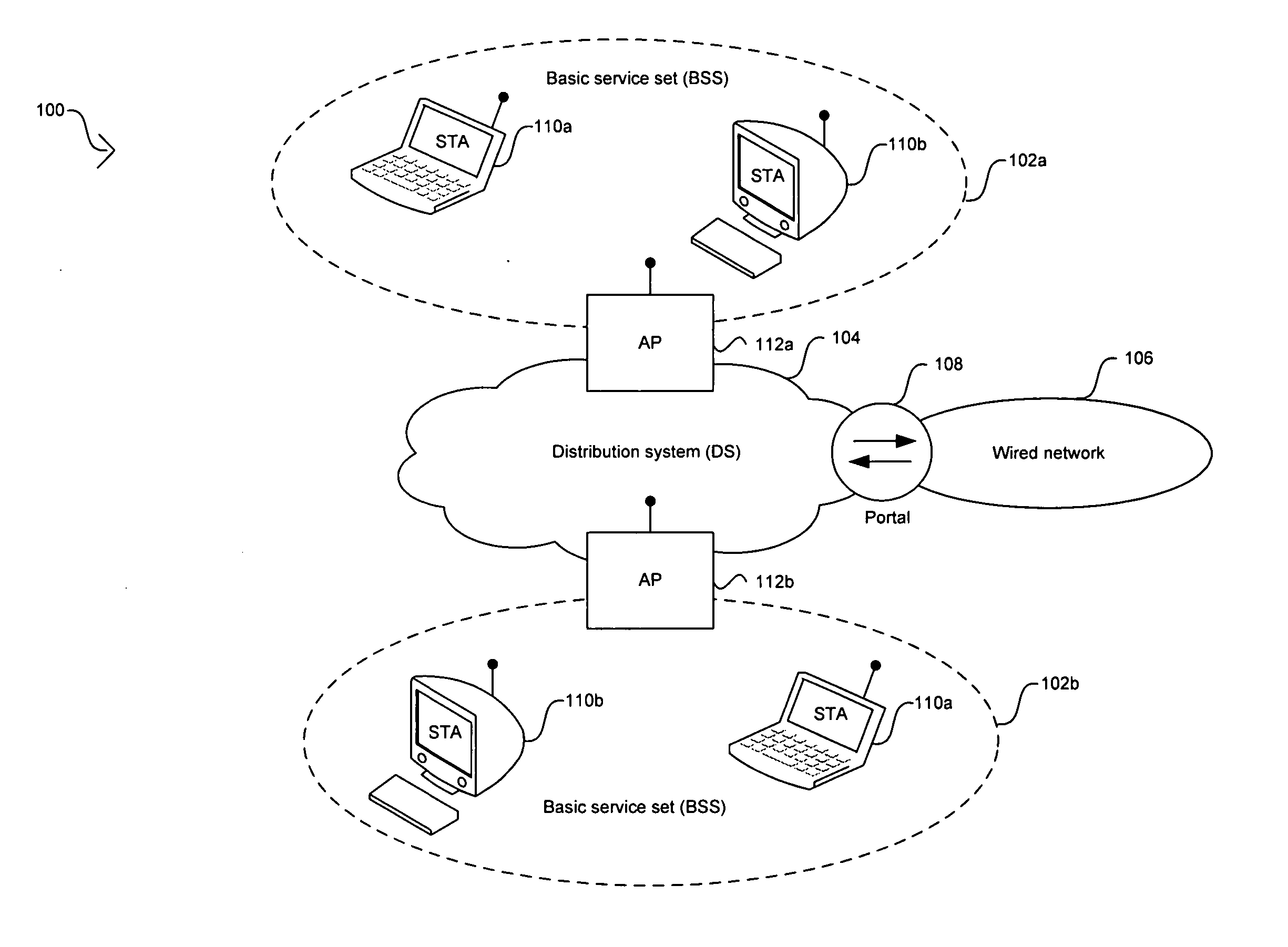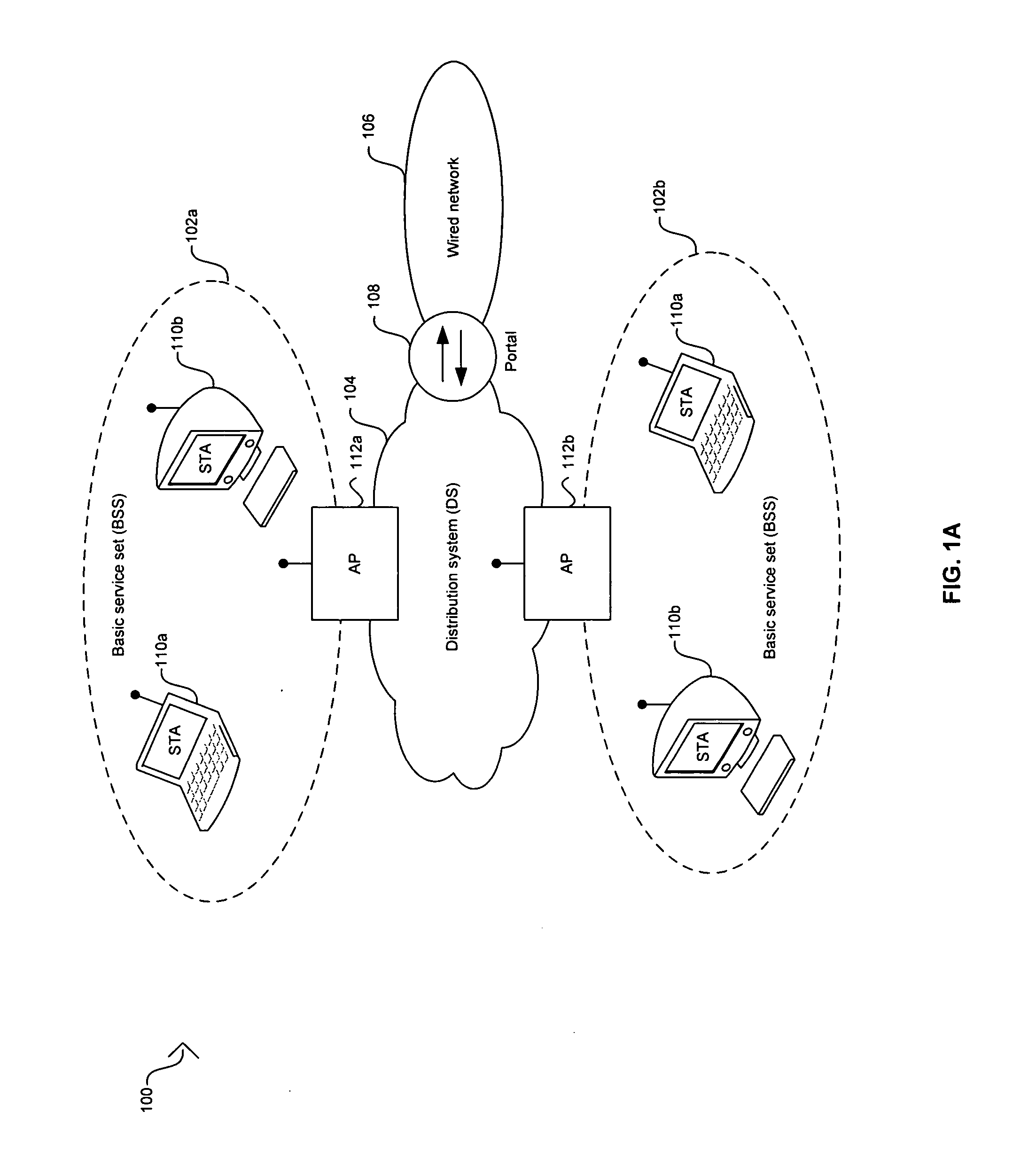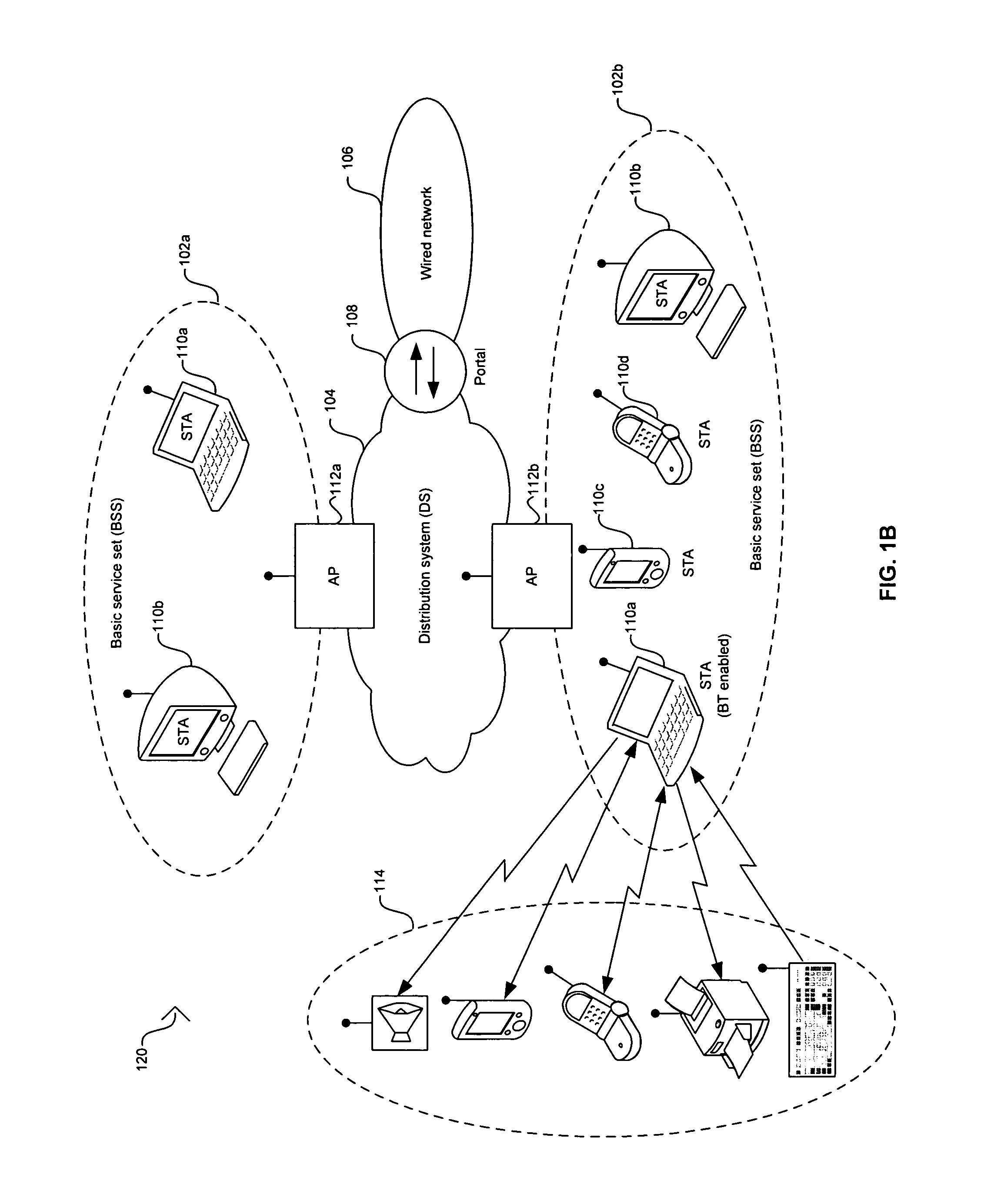Method and system for collocated IEEE 802.11 B/G WLAN, and BT with FM in coexistent operation
a technology of ieee 802 and coexistence operation, which is applied in the field of interference in communication systems, can solve the problems of significant interference or blocking of signals, interference effects of different types, and interference between operating devices
- Summary
- Abstract
- Description
- Claims
- Application Information
AI Technical Summary
Benefits of technology
Problems solved by technology
Method used
Image
Examples
Embodiment Construction
[0046] Certain embodiments of the invention may be found in a method and system for collocated IEEE 802.11 b / g WLAN, and Bluetooth (BT) with FM in coexistent operation. Aspects of the method and system may comprise a single chip that comprises an integrated BT radio and an integrated FM radio in a coexistence station may generate a priority signal to disable WLAN transmissions in a WLAN radio when a BT HV3 frame is available for transmission. When the priority signal is asserted, an exponentially growing retransmission backoff mechanism in the WLAN radio may be disabled. Moreover, when the BT radio and the WLAN radio are enabled for coexistence operation, a WLAN fragmentation threshold in the WLAN radio may be modified based on a WLAN modulation rate and the BT HV3 frame duration. An on-chip processor that time multiplexes FM and Bluetooth data processing may be utilized to control the BT radio operation and the FM radio operation in the single chip.
[0047]FIG. 1A is a block diagram...
PUM
 Login to View More
Login to View More Abstract
Description
Claims
Application Information
 Login to View More
Login to View More - R&D
- Intellectual Property
- Life Sciences
- Materials
- Tech Scout
- Unparalleled Data Quality
- Higher Quality Content
- 60% Fewer Hallucinations
Browse by: Latest US Patents, China's latest patents, Technical Efficacy Thesaurus, Application Domain, Technology Topic, Popular Technical Reports.
© 2025 PatSnap. All rights reserved.Legal|Privacy policy|Modern Slavery Act Transparency Statement|Sitemap|About US| Contact US: help@patsnap.com



